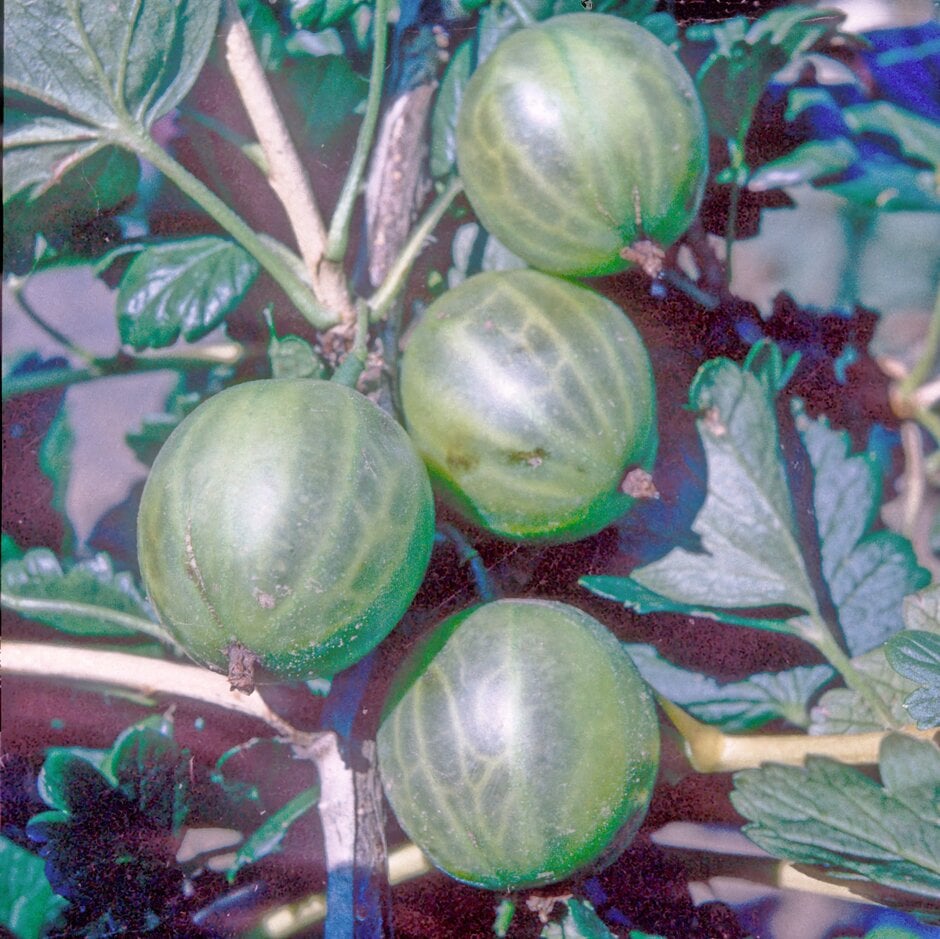Ribes uva-crispa 'Leveller' (D)
gooseberry 'Leveller'
Large spreading bush with deeply lobed leaves. Produces good crops of large golden berries with excellent flavour good for dessert and culinary use. Needs good soil to do well. Self fertile.

Buy this plant
Size
Ultimate height
1–1.5 metresTime to ultimate height
2–5 yearsUltimate spread
1–1.5 metresGrowing conditions
Moisture
Moist but well–drainedpH
Acid, Neutral, AlkalineColour & scent
| Stem | Flower | Foliage | Fruit | |
| Spring | Green | Green | ||
|---|---|---|---|---|
| Summer | Green | Green Yellow | ||
| Autumn | Yellow | |||
| Winter |
Position
- Full sun
- Partial shade
Aspect
East–facing or South–facing or West–facing
Exposure
Sheltered Hardiness
H6Botanical details
- Family
- Grossulariaceae
- Native to GB / Ireland
- No
- Foliage
- Deciduous
- Habit
- Bushy
- Genus
Ribes can be deciduous or evergreen shrubs, sometimes spiny, with simple, usually palmately lobed leaves and small tubular or bell-shaped, solitary or racemose flowers borne in spring or summer, followed by juicy, sometimes edible berries
- Name status
Accepted
- Horticultural Group
- Dessert blackcurrants are sweet and juicy and are best eaten picked fresh and raw
How to grow
Cultivation
Grow gooseberries in a moist but well-drained soil that has been improved with organic matter. Mildly alkaline (chalky) soils are tolerated. Fruiting is best in full sun, but they will tolerate partial shade. They can be grown as goblet-shaped bushes or trained forms such as cordons. Water well as fruits swell and keep the base of the plants weed and grass-free. For advice see gooseberry cultivation.
Propagation
Propagate by hardwood cuttings in winter
Suggested planting locations and garden types
- Edible fruit
Pruning
Prune gooseberries in winter and summer
Pests
May be susceptible to gooseberry sawfly, birds and squirrels
Diseases
May be susceptible to gooseberry mildew and gooseberry leaf spot
Get involved
The Royal Horticultural Society is the UK’s leading gardening charity. We aim to enrich everyone’s life through plants, and make the UK a greener and more beautiful place.